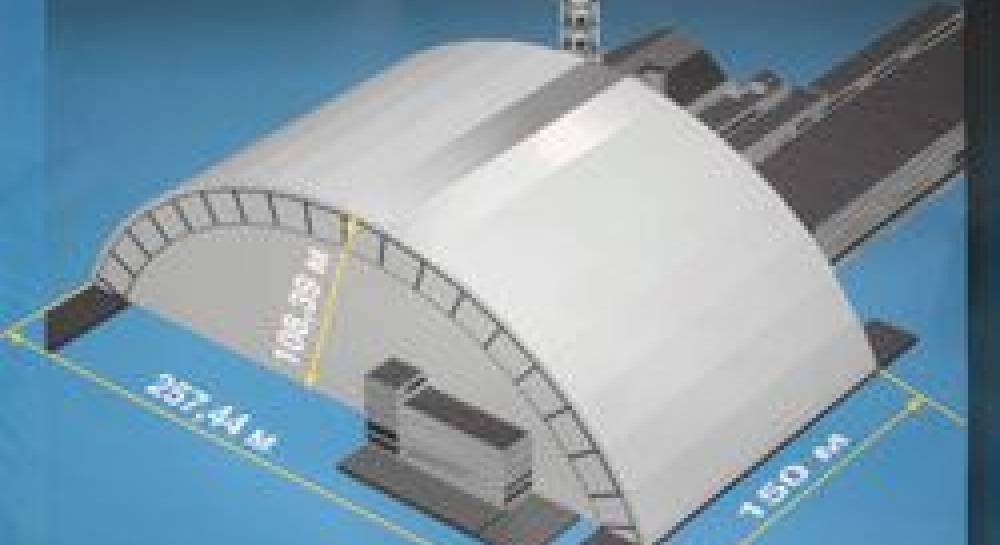
22 years after disaster, Chernobyl reactor is getting new shelter
Twenty-two years after the Chernobyl nuclear disaster, work is under way on a larger, stronger shelter to cover the ruins of the exploded Soviet power plant and prevent further contamination...
Twenty-two years after the Chernobyl nuclear disaster, work is under way on a larger, stronger shelter to cover the ruins of the exploded Soviet power plant and prevent further contamination.
For years, the original iron and concrete shelter that was hastily constructed over the reactor has been leaking radiation, cracking and threatening to collapse.
"After we complete this project we will reach the goal of a safe state in Chernobyl," said Vince Novak, Director of the Nuclear Safety Department with the European Bank for Reconstruction and Development, which manages the $505 million project.
The new shelter is just part of a broader $1.4 billion effort financed by international donors that began in 1997. The project involves fixing the current shelter, monitoring radiation, training experts and building a massive new steel shelter that will slide over the current structure.
Chernobyl`s reactor No. 4 exploded on April 26, 1986, spewing radiation over a large swath of the former Soviet Union and much of northern Europe in the world`s worst nuclear accident. An area roughly half the size of Italy was contaminated, forcing the resettlement of hundreds of thousands of people.
In the first two months after the disaster, 31 people died from exposure to radioactivity, but there is heated debate over the subsequent toll. The U.N. health agency estimates that about 9,300 people will eventually die from cancers caused by Chernobyl`s radiation. Some groups, such as Greenpeace, insist the toll could be 10 times higher.
The old shelter, called a "sarcophagus," was built in just six months to cover the demolished reactor. But intense radiation has weakened the shelter, according to the U.S. Nuclear Regulatory Commission. It has also been damaged by the rainwater and snow that got inside through cracks in its roof, experts say.
Officials say that were a tornado or an earthquake to hit the area the shelter could collapse, releasing clouds of poisonous radioactive dust.
"This installation has a low or limited safety," said Valeriy Bykov, deputy chairperson of Ukraine`s State Nuclear Regulatory Committee. "Some external factors can create dangerous radioactive incidents such as the emission of dust and its spread to great distances."
The first step, shoring up the sarcophagus, is almost complete, Ukrainian and EBRD officials say.
Later, a 150 meter (345-foot) tall, 260 meter (840-foot) wide and 150 meter (490-foot) long arch weighing 20,000 tons will be built and slid over the old shelter using railtracks.
The front side of the arch will be covered by metal, the back side will abut the wall of the adjacent reactor No.3. Construction of the arch is scheduled to begin next year and be completed in 2012, and it is designed to last 100 years.
The new structure will be big enough to house the Notre Dame Cathedral in Paris or the Statue of Liberty in New York. The project is designed and built by the French-led consortium Novarka, which includes the companies Bouygues SA and Vinci SA.
Workers wearing protective suits and respiratory masks will build the arch at a site about 120 meters (yards) away from the reactor, to minimize exposure to radiation. Specialists who need to be closer to the reactor will work in shifts as short as several minutes.
Once the arch is erected, the most unstable parts of the old shelter and the reactor will be dismantled and removed. In 50 years, the melted nuclear fuel will be extracted from the reactor, although it is unclear where it will be stored.
Experts still debate how much radioactive material remains inside the reactor. The EBRD says 95 percent of the reactor`s nuclear inventory remains inside the ruins, but some experts believe most of the radiation was released in the days after the accident.
The new shelter has evoked mixed feelings among Ukrainians.
Some are happy the reactor is finally going to be safely enclosed. Others, especially those directly affected by the disaster, accuse the government of playing up the need for a new shelter to get international aid while downplaying their health problems.
Even as the project is underway, scientists continue to debate it. Some favored alternate approaches, such as embedding the reactor in concrete or dismantling it. Other experts say the government should be more concerned about the health threat from contaminated land, ground water, equipment and spent nuclear fuel.
Nuclear energy is key for this country of 46 million. Ukraine today operates 15 reactors at four power plants, which generate nearly half of all its electricity. None is of the Chernobyl type.
President Viktor Yushchenko has called for expanding Ukraine`s nuclear power industry, but environmentalists oppose that. They point to the shelter`s colossal price and say the lesson of Chernobyl is that nuclear power carries hidden costs and dangers.
"Nuclear energy has shown how expensive it is," said Vladimir Chuprov, of Greenpeace Russia.

